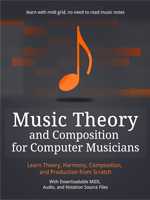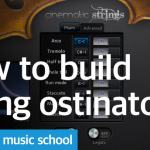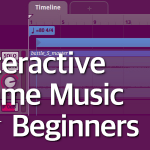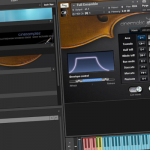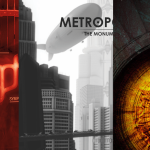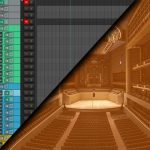Many years ago, “Mojo Madness”, a track by Thomas Bergersen, was released through Virtual Instrument Magazine – well, actually the first 20 seconds or so were released as source files, which proved to be a valuable educational content. Today, these files are no longer available, but you can still find the score in PDF for this short part on the Internet, for example on Scribd. It was a lot of fun to use this score to create my own mockup of “Mojo Madness”, so today I want to share with you the mockup, some tips and the MIDI source files of my own version.
Thus, please note – this is not the Mojo Madness, as in original files – it’s my own recreation based on the available score.
First, listen to the track on SoundCloud (there’s a short video later, too).
Now, you can download the files.
Download files
Click here to download a ZIP (5.7 MB) and unpack it on your computer. Inside you’ll find MIDI source file, and audio tracks in an .OGG vorbis format.
What I Used for This Recreation
The track itself is 150 BPM, and it is written in 4/4 meter. I work in Reaper, on my own orchestral template. For this track’s recreation, I’ve used a couple of virtual instrument libraries.
- For winds, I used CineWinds CORE by CineSamples, and from the Low Winds I use Low Winds by CineSamples. I never had the need for anything else, and while to some people these libraries sound a little too basic, they work for me.

Mojo Madness – a MIDI Mockup – this is the final MIDI and OGG loaded, since I forgot to make a screenshot on my main workstation in the actual orchestral template :).
- For brass I used CineSamples as well. For this track, I use patches from CineBrass CORE – the trumpets patch, the horns and the brassy trombones (CineBrass offers you two versions of trombones, one is brassy, and one is mellow). The score also calls for six horns, playing in unison, thus I used the 6 Horns patch from CineBrass CORE. Sometimes when I need a very strong horns sound, I use CineBrass 12 Horns patch from a separate library, but this time the horns are not playing any sort of main melody, so there was no need for this.
- For both winds and brass I used the “articulation” patches, since they already have a legato articulation loaded and all I have to do to switch between various articulations is keyswitches.
- The final seconds of the track didn’t sound nice to me (both a limitation of my libraries and my skills I suppose), so I added a chord played by a brass ensemble patch. You can hear it around 16 seconds (I used the sustains patch, not the prerecorded chords).
- For the percussion section, I used TrueStrike by Project SAM. It has both a nice timpani and a nice gran cassa. The cymbals come from the Orchestral Kit patch from True Strike.
- For harp, I used CineHarp, once again by CineSamples. And the xylophone comes from TrueStrike.
- For strings, I used two libraries. Mainly, I used Cinematic Strings 2, and I used their staccassimo articulation, to avoid getting muddy sound (since too fast staccato articulation could cause this).
- But I also double, or should I say – layer – the 1st Violins and Violas – the first pair plays with Cinematic Strings 2, and the second pair is doubled by patches from 8Dio Agitato Legato Arpeggio, which sound a bit sharper.
- To make sure the track won’t sound too empty, I’ve added a little constant noise track to play in the background.
I didn’t do too much mixing – I only moved the 8Dio Violins a little bit to the left. Otherwie, all other instruments are already pre-panned, since I used the main mix mics. I don’t use compression in my orchestral tracks, and EQ was limited to clearing the low end on most middle and high end instruments.
Here’s a short video about the recreation:
Tips and Notes
Whenever you try to recreate something based on an actual score, when you want to create an orchestral mockup based on a score, you need to remember one thing: you need to know how to read a score. Musical notation can be quite complex, and there are many symbols that you need to know in order to actually know what you need to do with your virtual instruments.
For example, in a score for Mojo Madness you can see some of the notes are crossed, or “slashed” – this tells us it is a tremolo articulation, not with altering between two different notes, but by playing the same note twice, as indicated by a single slash. The dots above or below the notes suggest that these notes should be played with staccato articulation. When you know things like this, it’s much easier to recreate a score with MIDI instruments.
If you need a resource on musical notation with picture, the best place to start is Wikipedia, which has a whole page of musical symbols.
Keep in mind that MIDI orchestral mockups will never sound like a real orchestra, or the actually piece you want to recreate. Understanding this will save you from frustration. But they can get really close to the real thing. How close? It depends on the instruments you’re using and your skills.
Don't forget to become a fan on Facebook and subscribe to new posts via RSS or via email.
